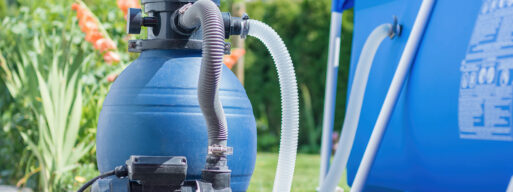Are you a proud owner of a swimming pool? Whether you use it for exercise, relaxation, or family fun, maintaining a clean and healthy pool requires proper circulation and filtration. And that’s where the pool pump comes in. But with so many different types of pool pumps on the market, how do you choose the right one for your needs? In this article, we’ll cover the key factors to consider when selecting a pool pump, from pump types to pool size and features, to cost, maintenance, and energy efficiency.
Why It’s Important To Select The Right Pump
Before we dive into the different types of pool pumps, let’s first understand why it’s essential to select the right one. A pool pump serves as the heart of your pool’s circulation system, helping to circulate the water through the filter and back into the pool. A pump that is too weak won’t be able to provide sufficient water flow to the filter, resulting in inadequate filtration and potential water quality issues. On the other hand, a pump that is too powerful may lead to excessive energy consumption and unnecessary wear and tear on the pool’s equipment.
Types of Pool Pumps
There are three primary types of pool pumps: single-speed, variable-speed, and energy-efficient pumps.
Single-speed
Single-speed pumps are the most traditional type of pool pump, and they operate at a constant speed, usually 3,450 RPM. They are typically the most affordable option but can be energy-intensive, resulting in higher electricity bills.
Variable-speed
Variable-speed pumps offer more flexibility than single-speed pumps, allowing you to adjust the speed to match the specific needs of your pool. They are also more energy-efficient, consuming up to 80% less energy than single-speed pumps.
Energy-efficient pumps
Energy-efficient pumps are a specific type of variable-speed pump that uses advanced motor technology to provide even greater energy savings. They are the most expensive option but can pay for themselves over time with lower energy bills.
Matching Pool Pump to Pool
When selecting a pool pump, it’s essential to consider the specific needs of your pool, including its size and features.
Size and Features
The size of your pool is a crucial factor in determining the appropriate pump size. A pump that is too small won’t be able to provide sufficient water flow, while a pump that is too large may lead to excessive energy consumption. Additionally, you should consider the features of your pool, such as the number of water features, spa, and other equipment that require water circulation.
Tips for Calculating Flow Rate and Head Pressure
To ensure that you select the appropriate pump size, you’ll need to calculate your pool’s flow rate and head pressure. The flow rate is the amount of water that flows through the pump per minute, while the head pressure refers to the resistance that the water encounters as it moves through the pool’s circulation system. By calculating these figures, you can determine the appropriate pump size for your pool.
Cost, Maintenance, and Lifespan
Cost, maintenance, and lifespan are also essential factors to consider when selecting a pool pump.
Tips for Maintaining and Troubleshooting Pool Pumps
Regular maintenance of your pool pump is critical to ensure its longevity and optimal performance. You should follow the manufacturer’s guidelines for cleaning and replacing the pump’s filter, and regularly inspect the pump for any signs of wear or damage. If you notice any issues with your pool pump, such as unusual noises or poor performance, you should troubleshoot the problem immediately to avoid more significant damage.
Energy-Efficiency
How Pool Pumps Can Save Money on Electricity Bills
Energy-efficient pool pumps are not only better for the environment but can also save you money on your electricity bills. By using less energy, these pumps can significantly reduce your pool’s energy consumption, potentially saving you hundreds of dollars each year.
Tips for Picking an Energy-efficient Pool Pump
When selecting an energy-efficient pool pump, look for models with the ENERGY STAR label, which indicates that they meet strict energy efficiency guidelines set by the US Environmental Protection Agency (EPA). Additionally, consider the pump’s variable speed settings, motor efficiency, and overall performance ratings.
Installation and Replacement
Proper installation and replacement of your pool pump are critical to its performance and longevity.
How to Properly Install a Pool Pump
When installing a new pool pump, it’s crucial to follow the manufacturer’s guidelines carefully. This may involve hiring a professional to ensure that the pump is correctly installed and that all electrical connections are secure.
When You Should Replace a Pool Pump
Pool pumps typically last between 8 and 10 years, depending on their usage and maintenance. If you notice any significant wear and tear or issues with the pump’s performance, it may be time to consider replacing it. Additionally, if your pump is more than ten years old, it may be less energy-efficient and may no longer meet the needs of your pool.
The Takeaway
Choosing the right pool pump is essential for maintaining a clean and healthy pool while minimizing energy consumption and costs. By considering factors such as pump type, pool size and features, cost, maintenance, and energy efficiency, you can select a pump that meets your specific needs and budget. Regular maintenance and proper installation can also extend the lifespan of your pump and help you avoid costly repairs down the line. With these tips in mind, you can enjoy your pool with confidence and peace of mind.


